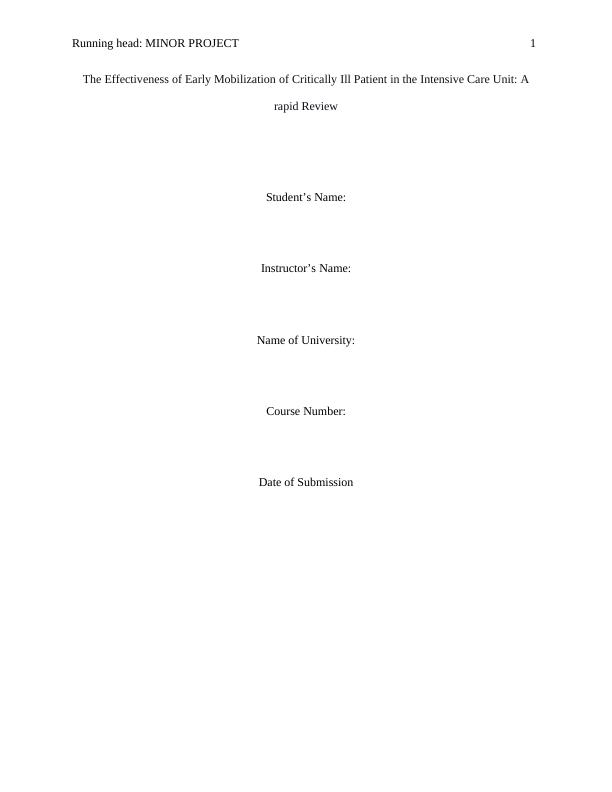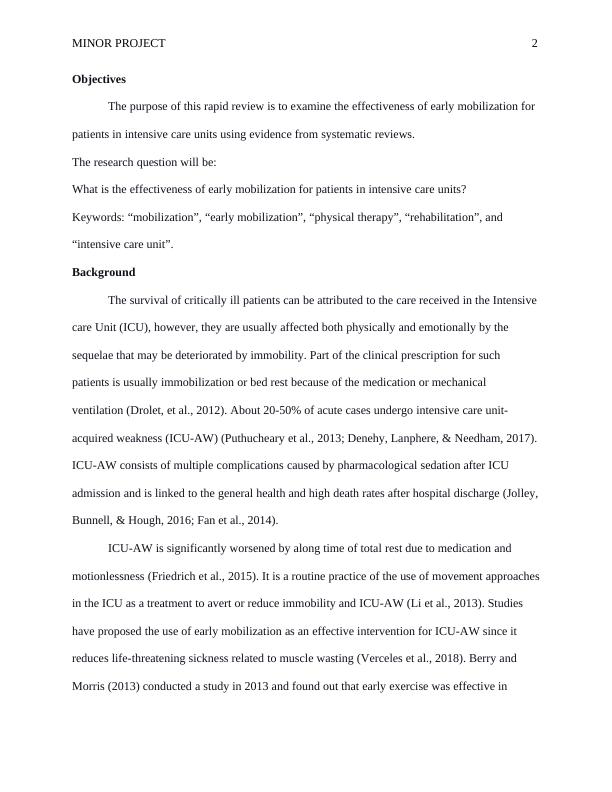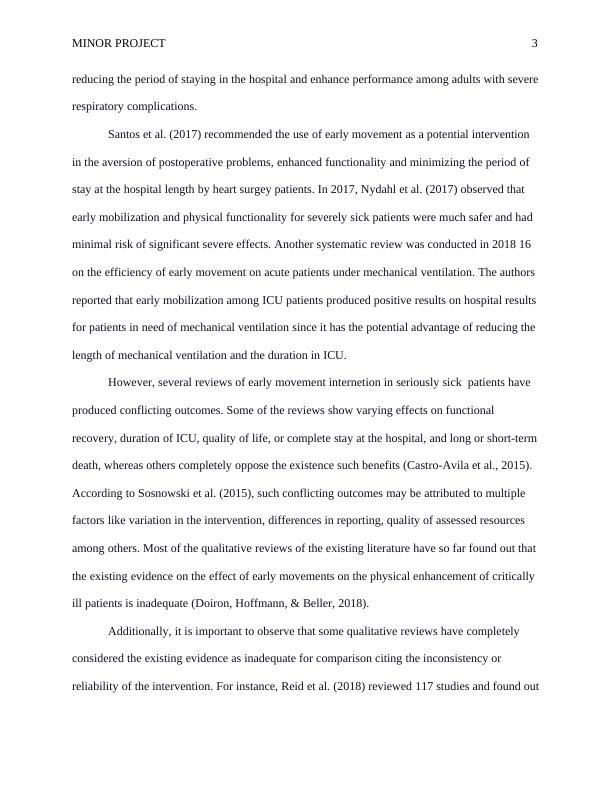Early Mobilization of Critically Ill Patient in Intensive Care Unit Research Question 2022
Identify, analyze and summarize the best available evidence of non-pharmacological interventions used to improve sleep in the elderly population.
15 Pages3062 Words23 Views
Added on 2022-09-26
Early Mobilization of Critically Ill Patient in Intensive Care Unit Research Question 2022
Identify, analyze and summarize the best available evidence of non-pharmacological interventions used to improve sleep in the elderly population.
Added on 2022-09-26
ShareRelated Documents
End of preview
Want to access all the pages? Upload your documents or become a member.
Chlorhexidine Gluconate Solution for VAP Prevention in ICU Patients
|18
|4452
|390
Evidence Based Nursing Research on Early Tracheostomy for Severe Burn Patients
|7
|920
|276
Nursing Reflection And Its Overview
|4
|893
|12
Systematic Review of Effects of Sedatives on Patient Ventilation
|11
|3034
|52
Effect of Early Mobilization on Adult ICU Patients
|8
|1532
|11
Nursign Research project 2022
|6
|1075
|19




